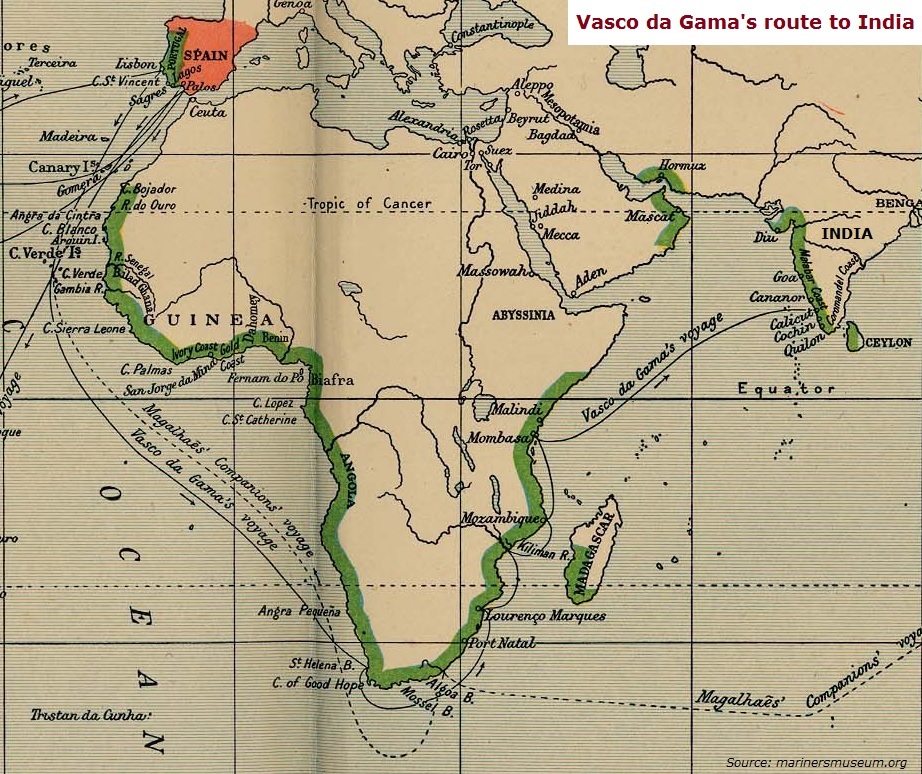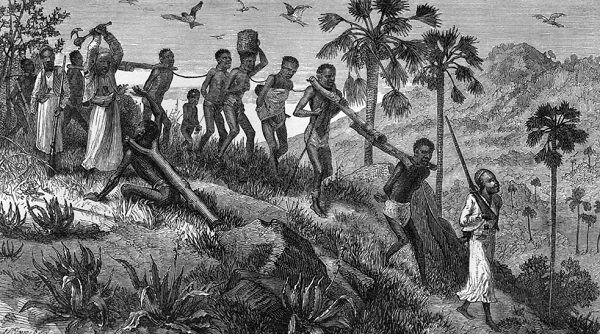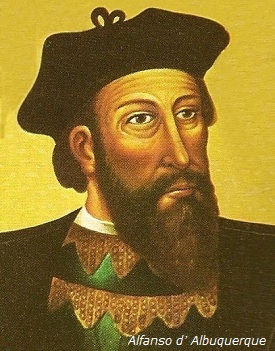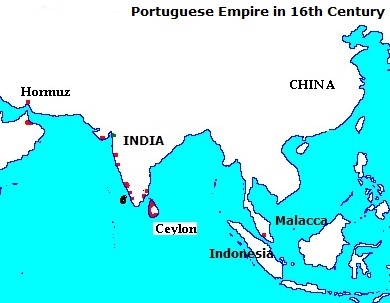
- Modern Indian History - Home
- Decline of Mughal Empire
- Bahadur Shah I
- Jahandar Shah
- Farrukh Siyar
- Muhammad Shah
- Nadir Shah’s Outbreak
- Ahmed Shah Abdali
- Causes of Decline of Mughal Empire
- South Indian States in 18th Century
- North Indian States in 18th Century
- Maratha Power
- Economic Conditions in 18th Century
- Social Conditions in 18th Century
- Status of Women
- Arts and Paintings
- Social Life
- The Beginnings of European Trade
- The Portuguese
- The Dutch
- The English
- East India Company (1600-1744)
- Internal Organization of Company
- Anglo-French Struggle in South India
- The British Conquest of India
- Mysore Conquest
- Lord Wellesley (1798-1805)
- Lord Hastings
- Consolidation of British Power
- Lord Dalhousie (1848-1856)
- British Administrative Policy
- British Economic Policies
- Transport and Communication
- Land Revenue Policy
- Administrative Structure
- Judicial Organization
- Social and cultural Policy
- Social and Cultural Awakening
- The Revolt of 1857
- Major Causes of 1857 Revolt
- Diffusion of 1857 Revolt
- Centers of 1857 Revolt
- Outcome of 1857 Revolt
- Criticism of 1857 Revolt
- Administrative Changes After 1858
- Provincial Administration
- Local Bodies
- Change in Army
- Public Service
- Relations with Princely States
- Administrative Policies
- Extreme Backward Social Services
- India & Her Neighbors
- Relation with Nepal
- Relation with Burma
- Relation with Afghanistan
- Relation with Tibet
- Relation with Sikkim
- Relation with Bhutan
- Economic Impact of British Rule
- Nationalist Movement (1858-1905)
- Predecessors of INC
- Indian National Congress
- INC & Reforms
- Religious & Social Reforms
- Religious Reformers
- Women’s Emancipation
- Struggle Against Caste
- Nationalist Movement (1905-1918)
- Partition of Bengal
- Indian National Congress (1905-1914)
- Muslim & Growth Communalism
- Home Rule Leagues
- Struggle for Swaraj
- Gandhi Assumes Leadership
- Jallianwalla Bagh Massacre
- Khilafat & Non-Cooperation
- Second Non-Cooperation Movement
- Civil Disobedience Movement II
- Government of India Act (1935)
- Growth of Socialist Ideas
- National Movement World War II
- Post-War Struggle
- Clement Attlee’s Declaration
- Reference & Disclaimer
Modern Indian History - The Portuguese
In 1498, Vasco da Gama of Portugal discovered a new and all-sea route from Europe to India. He sailed around Africa via the Cape of Good Hope (South Africa) and reached Calicut (as shown in the map given below).

Vasco da Gama returned with a cargo, which sold for 60 times the cost of his voyage.
Columbus and Vasco da Gamas sea routes along with other navigational discoveries opened a new chapter in the history of the world.
Adam Smith wrote later that the discovery of America and the Cape route to India were "the two greatest and most important events recorded in the history of mankind."
The new continent was rich in precious metals. Its gold and silver poured into Europe where they powerfully stimulated trade and provided some of the capital, which was soon to make European nations the most advanced in trade, industry, and science.
America became a new and inexhaustible market for European manufacturers.
Some other source of early capital accumulation or enrichment for European countries was their penetration into African land in the middle of the 15th century.
In the beginning, gold and ivory of Africa had attracted the foreigner. Very soon, however, trade with Africa concentrated on the slave trade.
In the 16th century, this trade was a monopoly of Spain and Portugal; later it was dominated by Dutch, French, and British merchants.
Year after year (particularly after 1650), thousands of Africans were sold as slaves in the West Indies and in North and South America.

The slave ships carried manufactured goods from Europe to Africa, exchanged them on the coast of Africa for Negroes, took these slaves across the Atlantic and exchanged them for the colonial produce of plantations or mines, and finally brought back and sold this produce in Europe.
While no exact record of the number of Africans sold into slavery exists, historians' estimate, ranged between 15 and 50 million.
Slavery was later abolished in the 19th century after it had ceased to play an important economic role, but it was openly defended and praised as long as it was profitable.
Monarchs, ministers, members of Parliament, dignitaries of the church, leaders of public opinion, and merchants and industrialists supported the slave trade.
On the other hand, in Britain, Queen Elizabeth, George III, Edmund Burke, Nelson, Gladstone, Disraeli, and Carlyle were some of the defenders and apologists of slavery.
Portugal had a monopoly of the highly profitable Eastern trade for nearly a century. In India, Portugal established her trading settlements at Cochin, Goa, Diu, and Daman.
From the beginning, the Portuguese combined the use of force with trade and they were helped by the superiority of their armed ships which enabled them to dominate the seas.
Portuguese also saw that they could take advantage of the mutual rivalries of the Indian princes to strengthen their position.
Portuguese intervened in the conflict between the rulers of Calicut and Cochin to establish their trading centers and forts on the Malabar Coast. Likewise, they attacked and destroyed Arab shipping, brutally killing hundreds of Arab merchants and seamen. By threatening Mughal shipping, they also succeeded in securing many trading concessions from the Mughal Emperors.

Under the viceroyalty of Alfanso d Albuquerque, who captured Goa in 1510, the Portuguese established their domination over the entire Asian land from Hormuz in the Persian Gulf to Malacca in Malaya and the Spice Islands in Indonesia.
Portuguese seized Indian territories on the coast and waged constant war to expand their trade and dominions and safeguard their trade monopoly from their European rivals.
In the words of James Mill (the famous British historian of the 19th century): "The Portuguese followed their merchandise as their chief occupation, but like the English and the Dutch of the same period, had no objection to plunder, when it fell in their way."
The Portuguese were intolerant and fanatical in religious matters. They indulged in forcible conversion offering people the alternative of Christianity or sword.
Portuguese approach was particularly hateful to people of India (where the religious tolerance was the rule). They also indulged in inhuman cruelties and lawlessness.
-
In spite of their barbaric behavior, Portuguese possessions in India survived for a century because −
They (Portuguese) enjoyed control over the high seas;
Their soldiers and administrators maintained strict discipline; and
They did not have to face the fight of the Mughal Empire as South India was outside Mughal influence.

Portuguese clashed with the Mughal power in Bengal in 1631 and were driven out of their settlement at Hugli.
The Portuguese and the Spanish had left the English and the Dutch far behind during the 15th century and the first half of the 16th century. But, in the latter half of the 16th century, England and Holland, and later France, all growing commercial and naval, powers, waged a fierce struggle against the Spanish and Portuguese monopoly of world trade.
Portuguese hold over the Arabian Sea had been weakened by the English and their influence in Gujarat had become negligible.
Decline of Portuguese
-
Portugal was, however, incapable of maintaining for long its trade monopoly or its dominion in the East because of −
Its population was less than a million;
Its Court was autocratic and decadent;
Its merchants enjoyed much less power and prestige than its landed aristocrats;
It lagged behind in the development of shipping, and
It followed a polity of religious intolerance.
It became a Spanish dependency in 1530.
In 1588, the English defeated the Spanish fleet called the Armada and shattered Spanish naval supremacy forever.